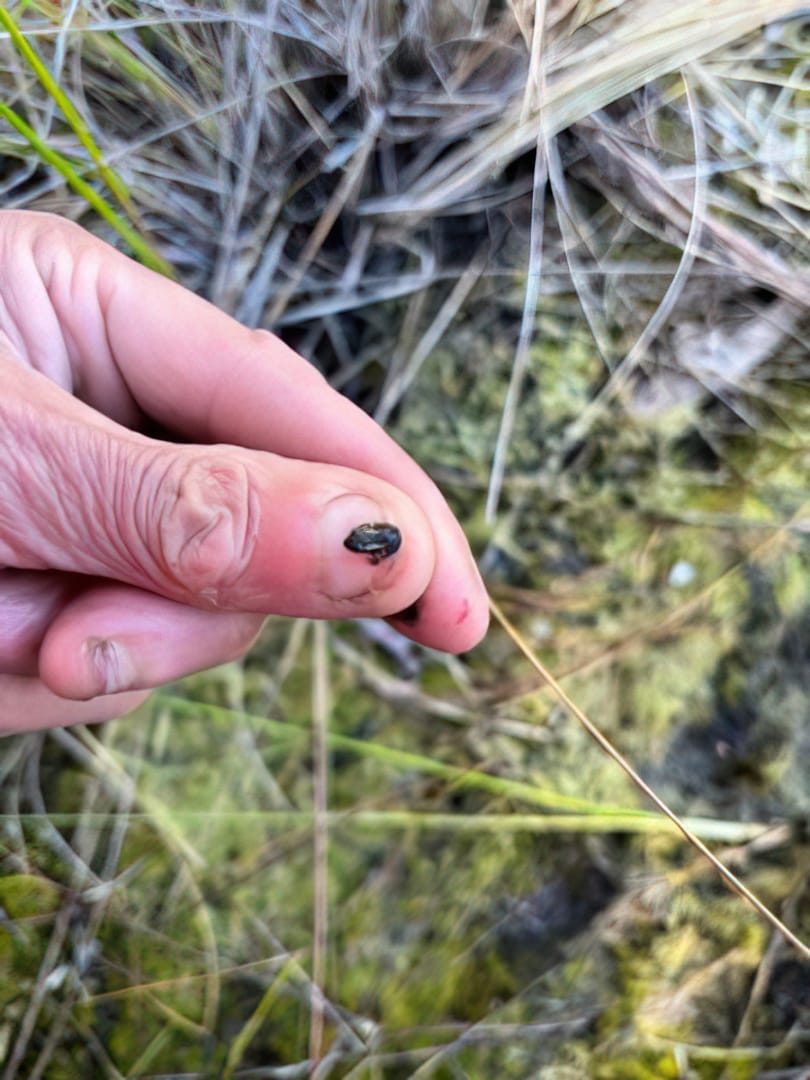
The beginning of the Djeran season is a great time to get out to our natural areas and see what’s surviving. Especially after the dry season and if you’re looking from a revegetation perspective, it’s a great opportunity to take a close look at ground level and take stock of the little critters that make the system work.
The picture below is a good example of this, besides showing that I bite my nails! This little frog that happens to be a Clicking Frog (Crinia insignifera) and where I picked it up was from an area that is dry from Kambarang to Makuru (October to June), so that’s roughly eight months of no water but not necessarily dry soil.
What does this little frog eat? This particular individual was 8mm long, so anything up to half its length, such as black crickets, termites, and cockroaches are all fair game.
Knowing the role that plants play in the system, they anchor the soil, and provide oxygen and protection for its inhabitants. This is probably the most important consideration when developing your revegetation plan. It’s this last point where I place most emphasis in this article.
Plants create a microclimate by drawing up moisture through their roots and up and out of their leaves in a process called evapotranspiration (Fig. 2) And for small critters like this Clicking Frog that has a high surface area and can quickly lose moisture to the environment on a hot day, it’s a matter of life and death.
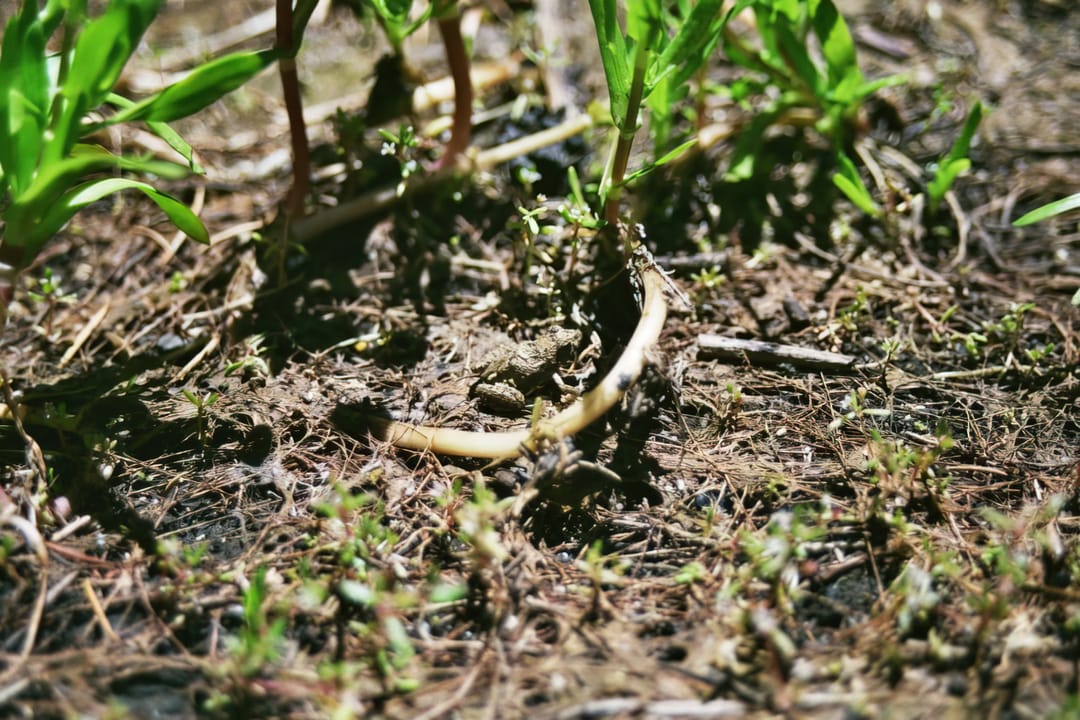
Low growing waterlogging tolerant herbaceous perennial and annual species along with sedges and rushes all play their part in establishing and maintaining this microclimate (Fig. 3) The important thing here is to map out your zones according to where the moisture and water levels are at during extreme times. This gets me back to the season we are currently in—Djeran or Autumn.
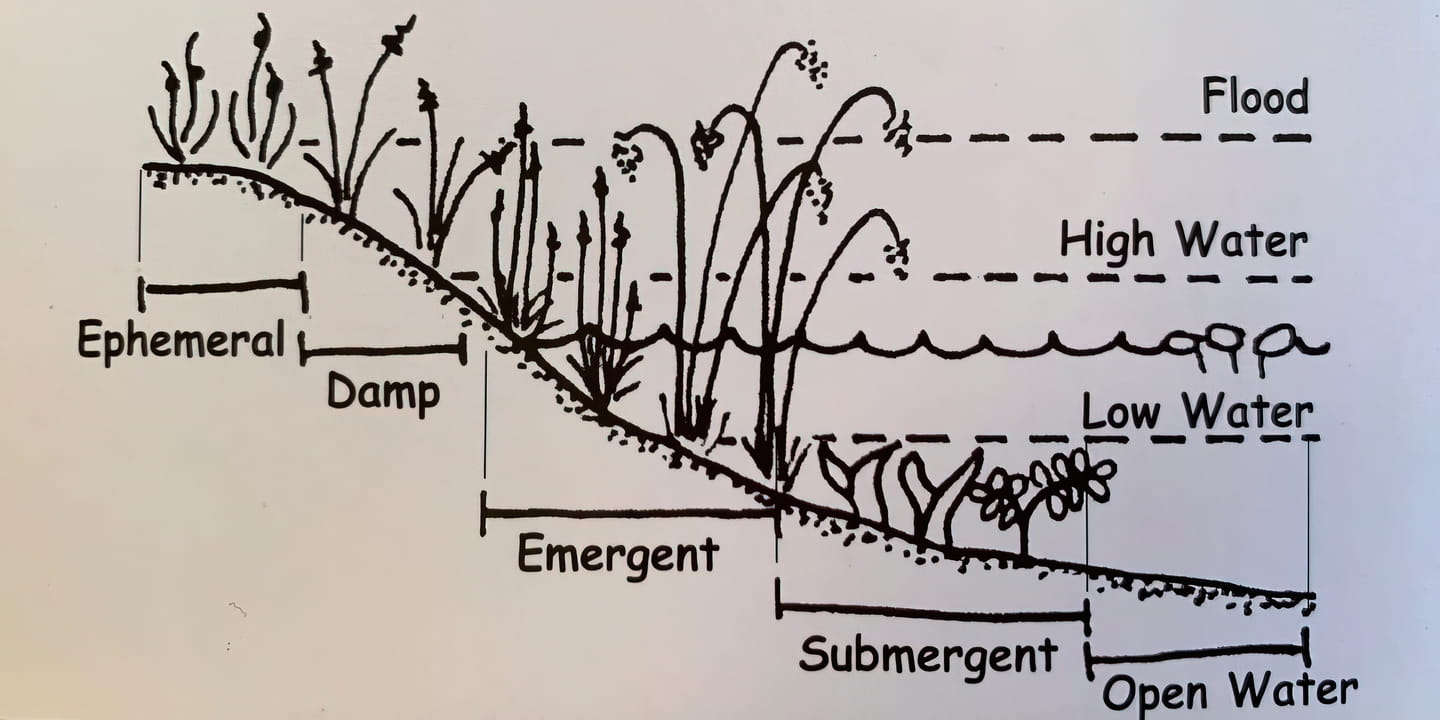
There’s another component to the ground layer and its leaf litter, the fallen leaves provide a buffer from rain and heat and sustain a food source for various invertebrates. Invertebrates, or critters that do not have a backbone, such as insects, are the key food source for many of our vertebrate critters. So, where does this leaf litter come from? Mainly from the middle and upper canopy.
Invertebrates need to be your main target species when designing a revegetation project. They provide many of the ecosystem services such as pest control and pollination, and as mentioned above, are a food source for many species such as frogs.
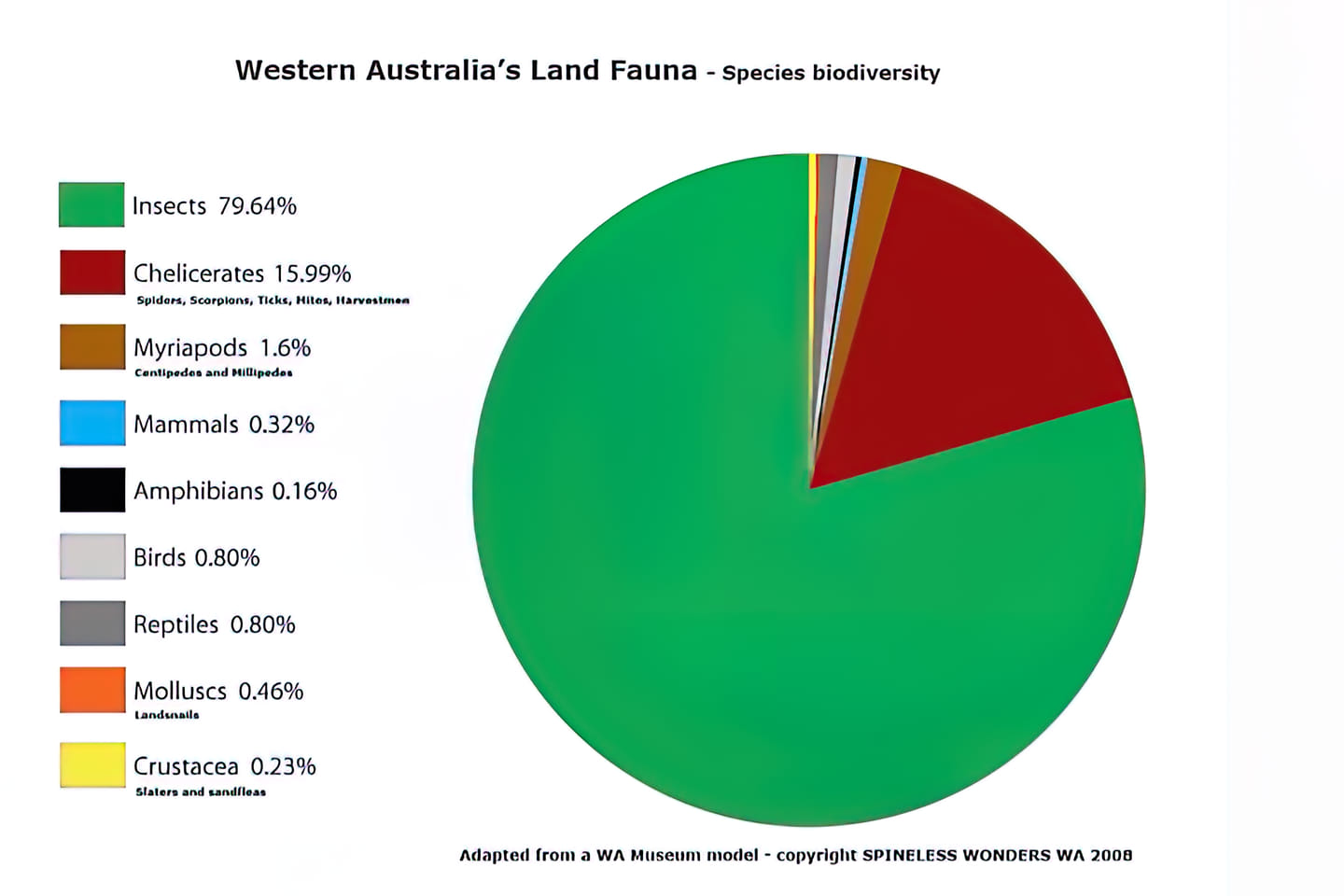
Plant texture is also important, for example, peeled bark provides sites for insects to utilise and in turn this provides a food source for small insectivorous birds such as wrens, robins, fantails, whistlers and pardalotes. Including prickly plants helps as well as these provide protection for many small birds from predators.
Flower colour also needs to be considered. As a general rule, insects do not see red (Fig. 5) hence fewer large red flowering plants should be included on the list and the prominent flowers should be coloured yellow, then blue to violet.
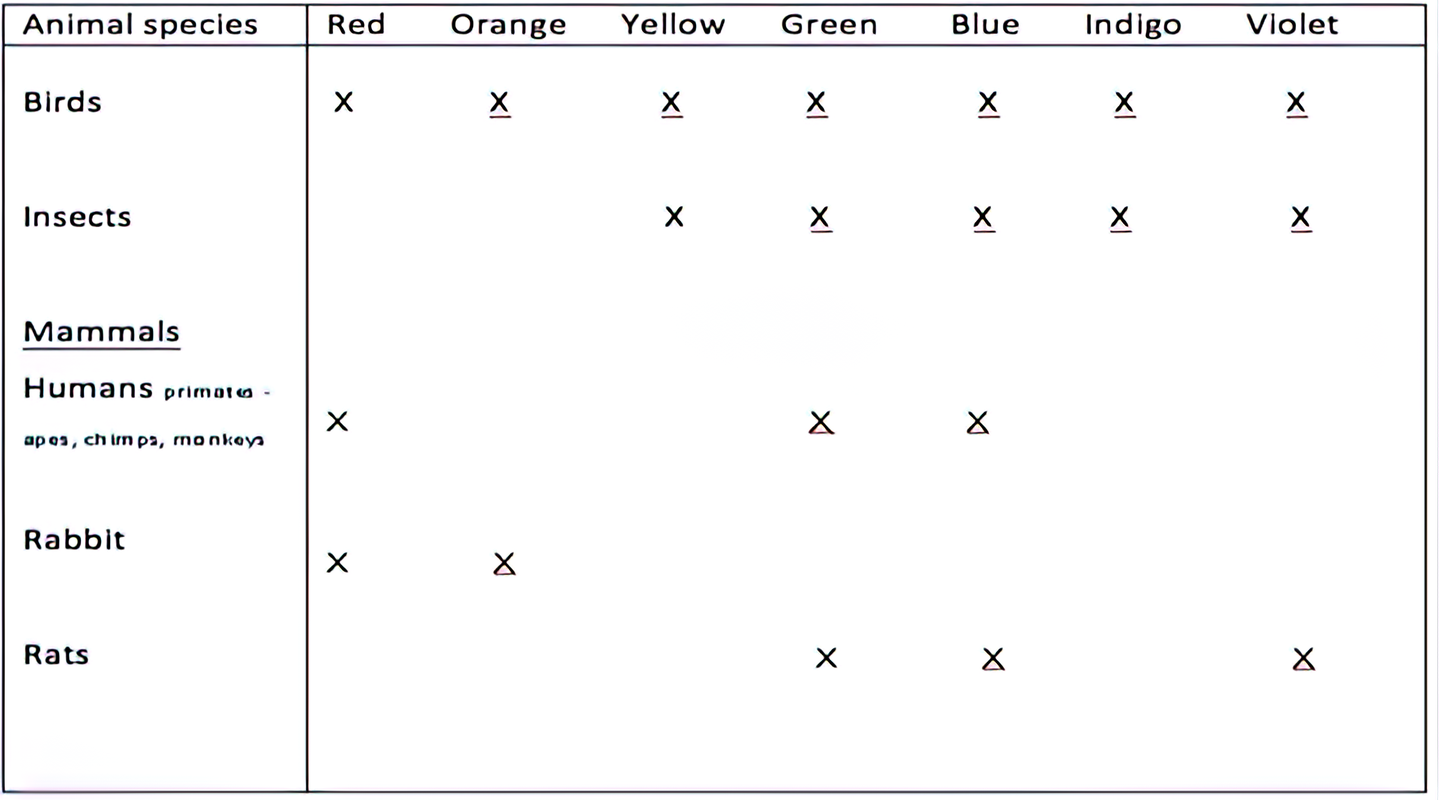
A flowering phenology will allow a food source for pollinators throughout the year and especially at the time of the year when nectar is scarce (Fig. 6). The Marri tree (Corymbia calophylla) is of particular importance at the driest periods of the year as it is a much-needed food source and source of shelter.
| Plant species | Months of the year | |||||||||||
| Jan | Feb | Mar | Apr | May | Jun | Jul | Aug | Sep | Oct | Nov | Dec | |
| Eucalyptus marginata | X | X | X | X | X | X | X | |||||
| Corymbia calophylla | X | X | X | |||||||||
| Taxandria parviceps | X | X | X | X | ||||||||
| Astartea fascicularis | X | X | X | X | X | X | X | |||||
| Regelia ciliata | X | X | X | X | X | X | X | X | X | X | ||
| Hakea lissocarpha | X | X | X | X | X | |||||||
| Hibbertia cuneiformis | X | X | X | X | X | X | X | |||||
Figure 6. Developing a flowering phenology will provide guidance of what is flowering when
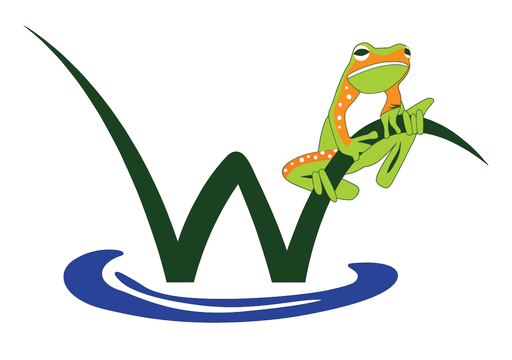
0 comments on “Revegetation for Small CrittersGoing into Djeran Season”